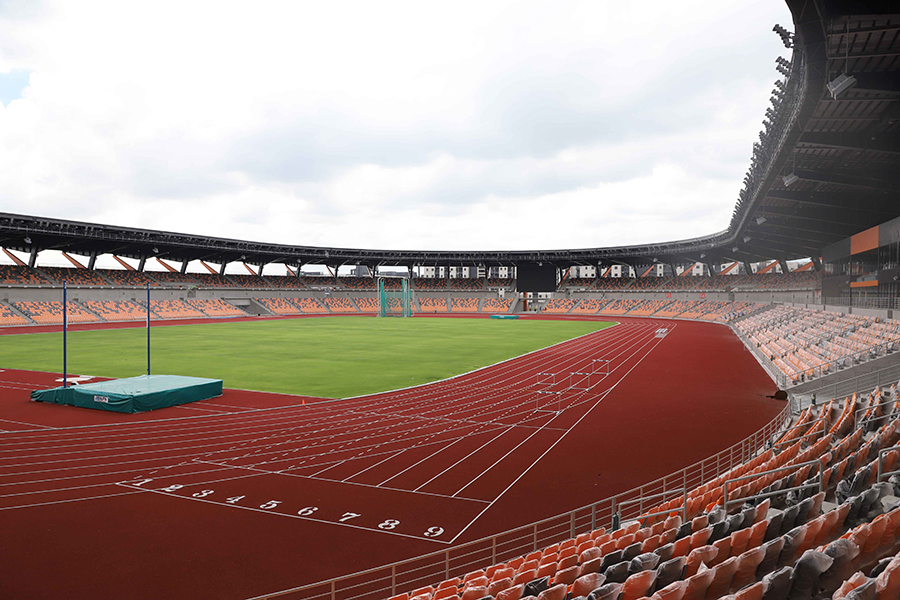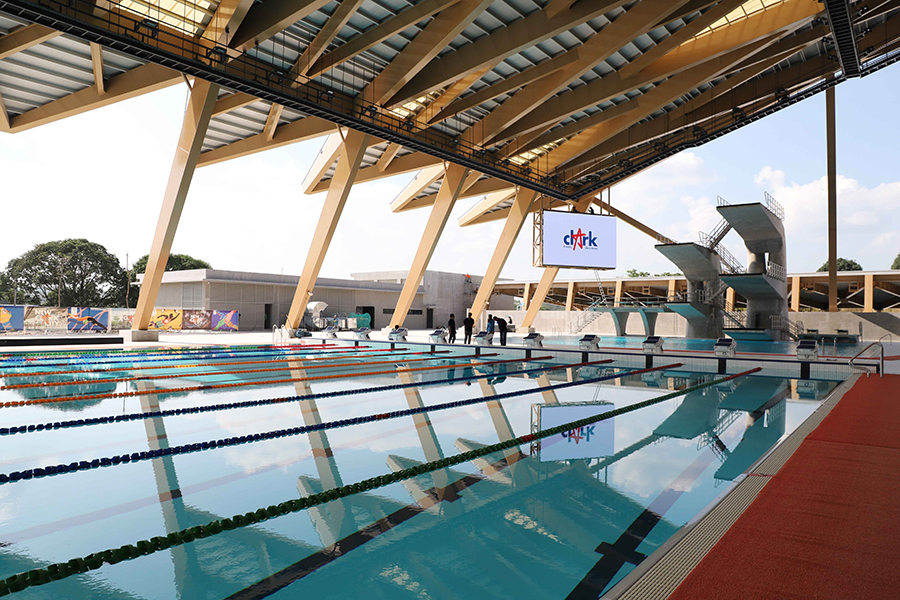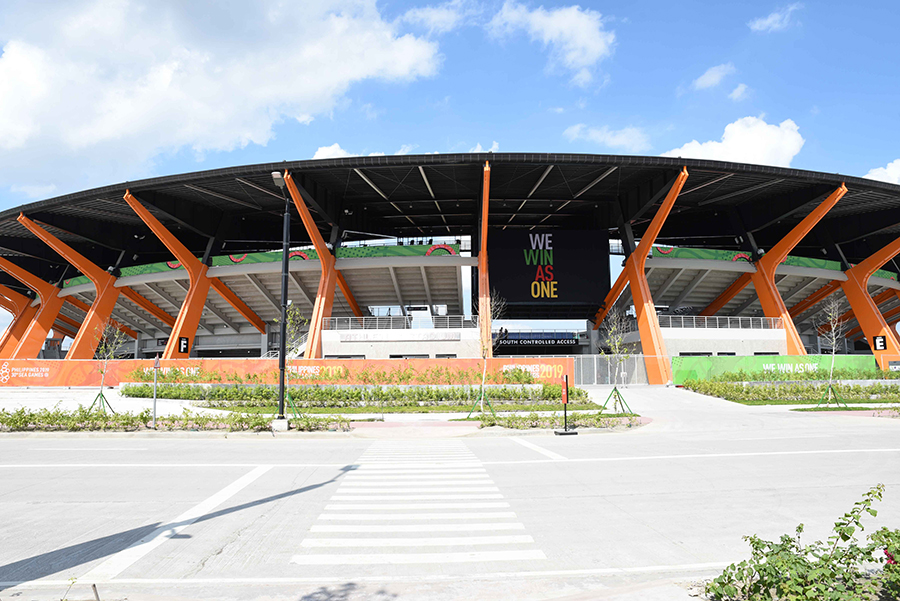NEW CLARK CITY – Central Luzon’s tourism industry sees brighter years ahead as world-class facilities are being built and operated within the Clark Special Economic Zone (CSEZ).
Department of Tourism (DOT) Secretary Bernadette Romulo-Puyat emphasized the government’s vision to have a sustainable tourism industry by facilitating integrated multi-industry growth areas.
“The national government is aiming for a more resilient economy by building regional growth centers across the country, and part and parcel of this outlook is ensuring the availability of public infrastructures and facilities to enable and support the economic progress,” the DOT chief said.

The Innovative Gateway
One of these facilities is the Clark International Airport (CRK) Passenger Terminal Building, set to be the next premier gateway to Asia. According to latest monitoring of the DOT– Region III, 2.4 million domestic and international tourists have arrived through the existing Clark airport in the first seven months of 2019 alone. Its current annual capacity is 4.2 million, serving mostly those living in northern and central Luzon, aside from the frequent flyers from Manila.
By mid-2020, the new terminal, with an increased capacity of 12 million passengers per annum, will be opened. A parallel runway will allow the simultaneous take-off and landing of airplanes and is expected to help ease the airport traffic in Manila. Currently, there are 19 airlines already operating in Clark.
The design of the Clark airport exhibits Filipino modernity. The terminal’s roof design is inspired by the surrounding natural land forms in the region—Mt. Arayat, Mt. Pinatubo, and the Zambales Mountain range. The roof trusses are made of glue-laminated wood imported from Austria.
The Department of Transportation (DOTr) and the Bases Conversion and Development Authority (BCDA) hope that the use of sustainable construction materials will aid in getting certification from the Leadership in Energy and Environmental Design (LEED), which takes into consideration the airport’s energy-efficient characteristics, water resource management, carbon footprint levels, and impact to the socio-economic agenda of the host communities.
The Megawide-GMR consortium developed the Clark airport terminal’s structure, with completion percentage already at 90.14%. The Luzon International Premiere Airport Development (LIPAD) Corp., a Changi-led consortium, meanwhile will operate and maintain the new terminal.
The Clark airport’s connectivity to major cities will further be enhanced with a commuter railway system operational by 2022, cutting the usual two-hour land travel time from Manila to Clark to just 55 minutes.
Another major significance of the new CRK is being a gateway to the newest economic and tourism attraction in the CSEZ—the New Clark City.
The Modern Filipino City
The New Clark City will be a model city for new Filipino urban dwellings that drive growth, promote culture and heritage, and embody sustainability. It is envisioned to be the country’s first smart, green and resilient metropolis.
Phase 1A of the development entails the construction of world-class sports facilities, and government buildings and residences. New Clark City Phase 1A was completed ahead of time in only 18 months by BCDA’s partner, infrastructure developer MTD Clark, Inc., the Philippine unit of MTD Capital Berhad of Malaysia. The modern New Clark City sports facilities used in the recently-concluded 30th South East Asian Games (SEA Games) include the 20,000-seater Athletics Stadium that has an International Association of Athletics Federations (IAAF) certified track, the 2,000-seater Fédération Internationale de Natation (FINA)-certified and baklad-inspired Aquatics Center, and an Athletes Village.
The Athletics Stadium was equipped with smart tracking technology, while the Aquatics Center boasts of lap-timers, touchpads, and underwater sound systems.
According to BCDA Vice President for Business Development Arrey A. Perez, these sports facilities can host international sporting events in the future. Recently, New Clark City was chosen by the Asian Swimming Federation as the venue of the 11th Asian Swimming Championships (ASC) happening in November 2020.

On Disaster Preparedness, Housing, Public Health, and Cultural Facilities
But more than these sports facilities, New Clark City also prides itself in the creation of a national back-up headquarters for disaster response. Perez noted that if a disaster strikes Manila affecting major offices and services, the National Government Administrative Center (NGAC) in New Clark City will serve as a back-up and disaster response operations center.
Key government offices have also already expressed interest in locating to New Clark City, allowing efficient delivery of services. More than half a million workforce is expected to live in the metropolis while total residents are estimated to reach 1.02 million.
New Clark City also has a government housing called The Residences to ease the transition of public servants moving into the new metropolis. The Residences is a 525-unit condominium type housing for use by government employees and other locators, featuring modern amenities and architectural design that’s iconic to Filipino culture. The units come in 1-bedroom, 2-bedroom, and 3-bedroom models.
As a modern city, New Clark City prioritizes public health with the construction of a polyclinic in partnership with the University of the Philippines (UP) and the Philippine General Hospital (PGH).
The hospital is equipped with a 24-hour Emergency Room Facility, Primary Care and Sports Medicine, Dentistry, Ophthalmology, Imaging Center (X-ray and Ultrasound), Diagnostic Laboratory and Pharmacy.
New Clark City also takes into consideration the use of natural resources for a healthy lifestyle and cultural exchange. Set on the banks of the Cutcut River is a 1.4-kilometer River Park, which, when fully developed, will stretch nine kilometers long.
The River Park is being developed as a multi-functional venue and recreational area that imbibes a healthy lifestyle through its walkways and enables a cultural haven with its art pieces and amphitheaters for future communal performances.
New Clark City will also soon house a state-of-the-art transit hub, convention and cultural centers, more parks, educational institutions, and an advanced food terminal and logistics hub.
The DOT fully supports CSEZ’s vision for sustainable tourism as these will boost tourism growth and provide more economic opportunities for the people. With the help of investors, the Department hopes to aid growth not only within the provinces of Pampanga and Tarlac, but to other neighboring provinces and regions.
Liked this post? Follow SwirlingOverCoffee on Facebook, YouTube, and Instagram.


